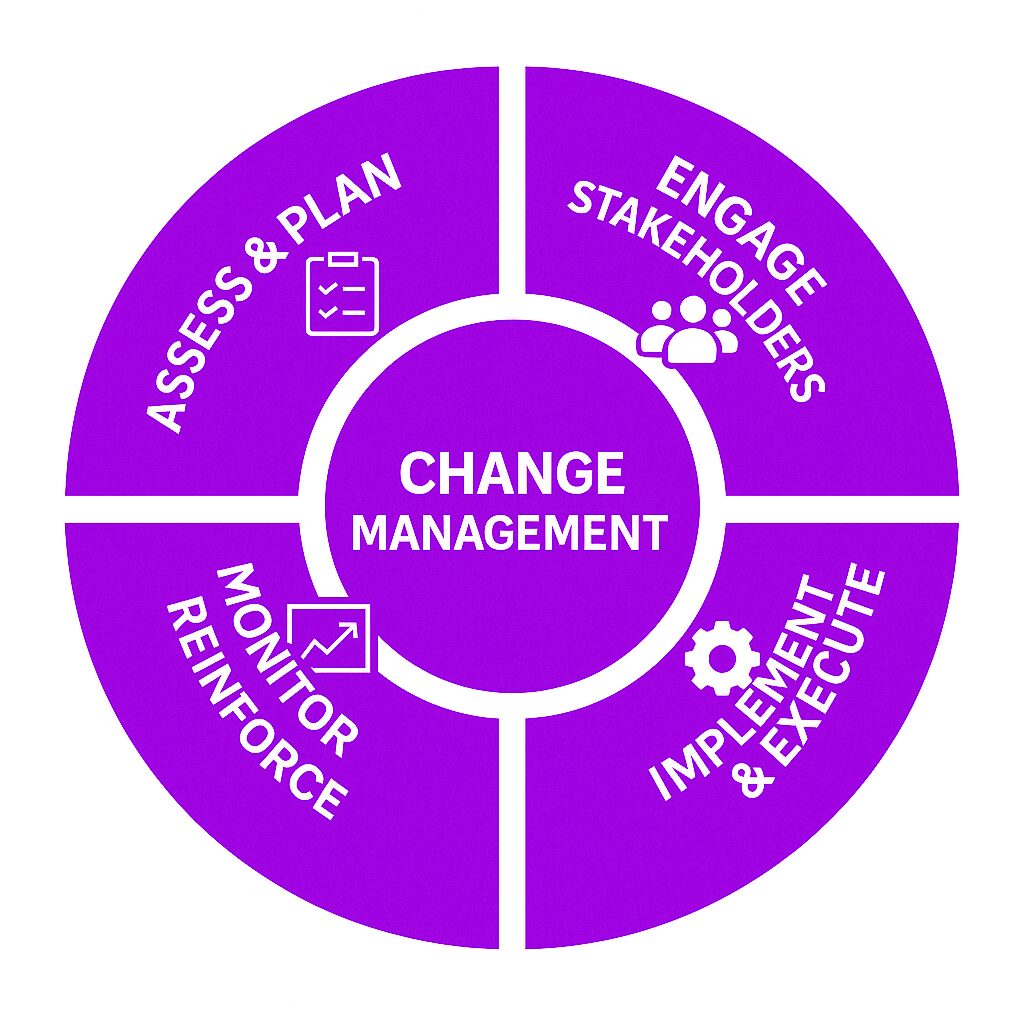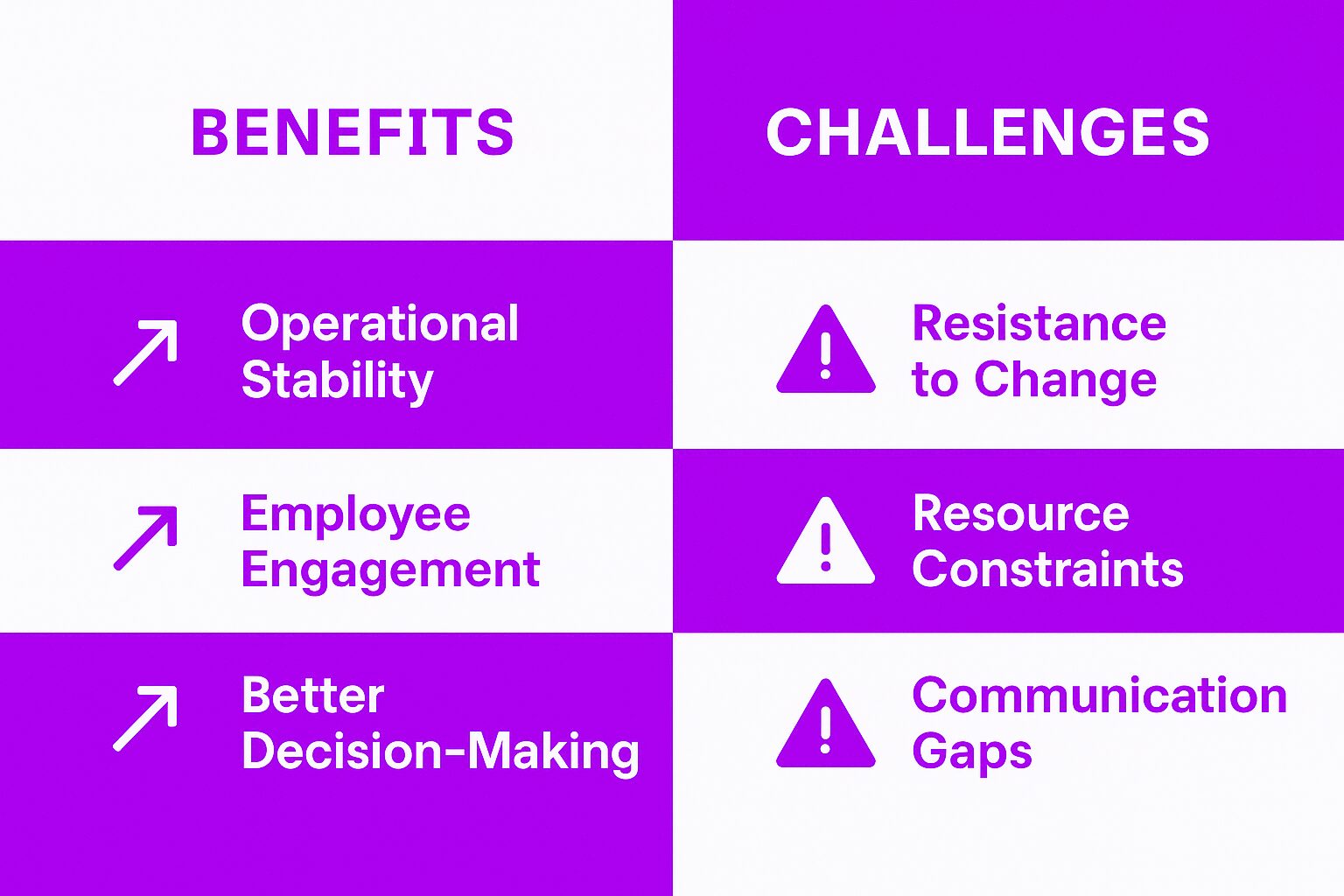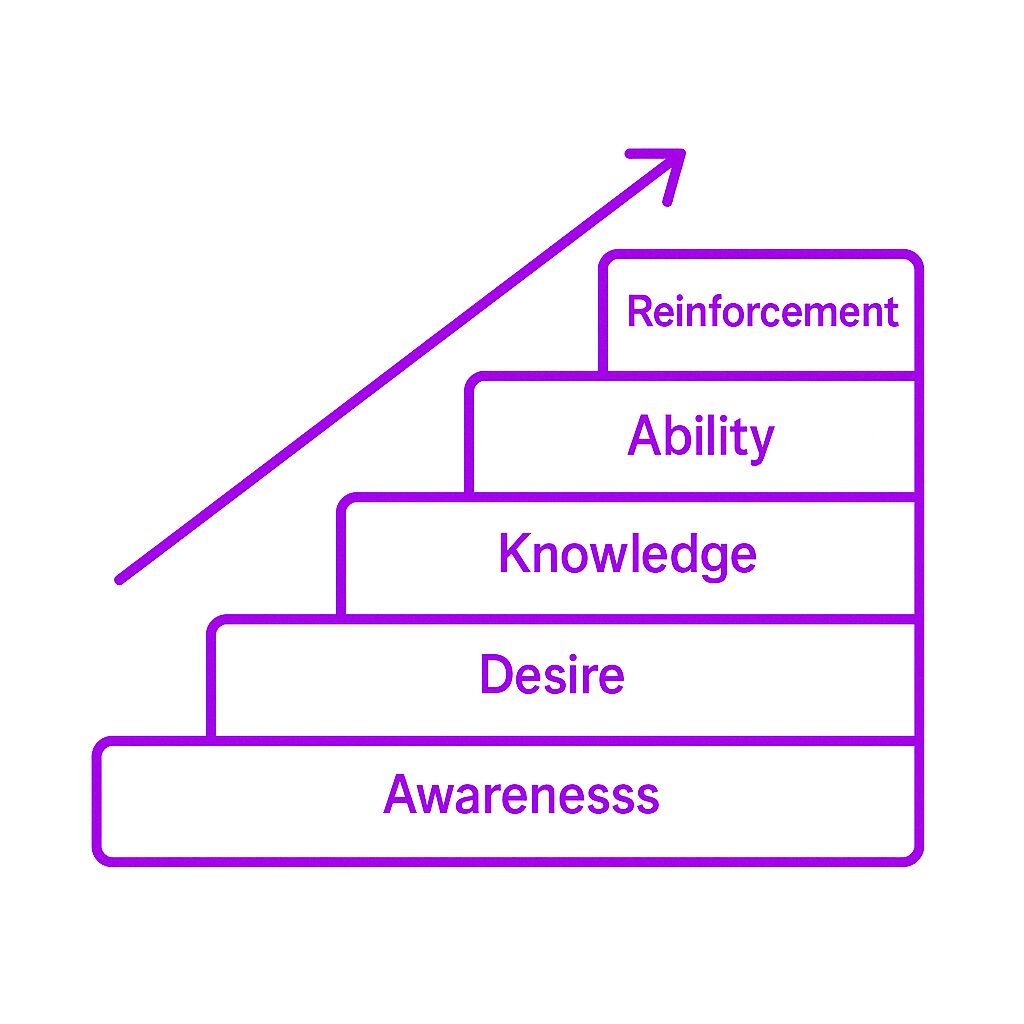Change management is the process of guiding individuals, teams, and organizations through transitions. It involves strategies, tools, and techniques to ensure that changes—whether structural, technological, or cultural—are adopted smoothly and effectively. Becoming a certified change management professional is crucial, as certification programs equip individuals with the necessary skills to lead change initiatives effectively. Change is inevitable in business, but without proper management, it can lead to confusion, disruption, and resistance.
Definition and Importance
Change management is a systematic approach to dealing with the transition or transformation of an organization’s goals, processes, and technologies. It is a crucial aspect of organizational development, enabling companies to adapt to changing market conditions, technological advancements, and shifting customer needs. Effective change management is essential for organizations to remain competitive, innovative, and successful. By implementing a structured change management strategy, organizations can navigate transitions smoothly, ensuring minimal disruption and maximum engagement from employees and stakeholders.
Why Change Management Matters
Organizations constantly adapt to new challenges. Whether it’s a shift in market demand, a merger, or a new technology rollout, businesses that fail to manage change effectively risk lost productivity, employee disengagement, and financial setbacks. A change management professional plays a crucial role in ensuring effective transition processes and maintaining productivity. Change management helps organizations remain agile while keeping employees aligned and engaged.
The Key Stages of Change Management
Assessment & Planning
Every change initiative begins with understanding the change process, which involves systematic diagnosis and strategic planning to determine what needs to change and why. This stage involves:
-
Identifying the problem or opportunity.
-
Assessing potential risks and impacts.
-
Establishing a clear vision for the desired outcome.
-
Mapping out the steps required for implementation.
Stakeholder Engagement
Change affects people. Change management professionals play a crucial role in engaging stakeholders early to ensure buy-in and minimize resistance. This step includes:
-
Identifying key stakeholders (leaders, employees, customers, etc.).
-
Communicating the purpose of the change.
-
Gathering feedback and addressing concerns.
Implementation & Execution
Once a plan is in place, implementing change begins, highlighting the importance of effective strategies to overcome challenges during this process. Effective implementation requires:
-
Clearly defined roles and responsibilities.
-
Training programs to equip employees with necessary skills.
-
Regular communication to track progress and address issues.
Monitoring & Reinforcement
Successful change isn’t complete when implementation ends. Success depends on sustaining the new processes and behaviors. This stage includes:
-
Tracking key performance indicators (KPIs) to measure success.
-
Gathering feedback for continuous improvement.
-
Reinforcing the change through leadership support and ongoing training.
The Purpose of Change Management
Change management ensures that transitions are strategic rather than chaotic. Developing a change management program is crucial, as it emphasizes understanding company culture and accounting for various systems and employees impacted by changes. Its main purposes include:
-
Reducing disruption and maintaining productivity.
-
Enhancing employee engagement and morale.
-
Aligning organizational changes with business goals.
-
Creating a structured approach to navigating uncertainty.
Benefits of Change Management
Operational Stability
Properly managed change within project management minimizes disruptions to business operations by assessing the impact of changes within a project’s structure. Employees stay focused, and customers experience minimal service interruptions.
Employee Engagement
Change can create anxiety. When employees understand the reasons behind change and feel supported through professional development and training programs that equip them with the necessary skills, they are more likely to embrace it.
Better Decision-Making
Organizations that follow structured change management processes make informed decisions rather than reacting impulsively.
Adaptability
Organizations that manage change well are more resilient in the face of market fluctuations and evolving industry trends.
Challenges in Change Management
Resistance to Change
People are naturally resistant to change, especially if they don’t understand or support it. Managing resistance requires open communication and involvement.
Resource Constraints
Organizations often struggle with budget limitations, lack of expertise, or inadequate training programs to support change initiatives. The Change Management Institute offers essential certification and training programs that can help overcome these resource constraints by equipping professionals with the necessary techniques and strategies to lead organizational change effectively.
Communication Gaps
Without clear and frequent communication, employees may feel left out, leading to confusion and frustration.
Unclear Objectives
If leaders fail to define the purpose of change, employees may struggle to see the relevance, resulting in low adoption rates.
Practical Tips for Successful Change Management
-
Start with a Clear Vision: Ensure everyone understands the purpose and expected outcomes of the change.
-
Communicate Early and Often: Transparency builds trust and reduces uncertainty.
-
Involve Employees: People support what they help create. Including employees in planning increases buy-in.
-
Provide Training: Equip employees with the skills needed to adapt to new processes or technologies.
-
Monitor Progress and Adjust: Track key performance indicators and refine strategies as needed.
Types of Organizational Change Management
Strategic Change
Changes that impact an organization’s long-term direction, such as transformation projects, mergers, acquisitions, or shifts in business models, require aligning employee expectations and integrating teams for successful strategic change.
Operational Change
Adjustments to day-to-day processes, such as workflow improvements, restructuring, or cost-cutting measures.
Technological Change
Implementing new software, automation tools, or digital transformations that affect employees and customers.
Structural Change
Structural change refers to modifications in an organization’s structure, such as reorganization, downsizing, or mergers and acquisitions. These changes can significantly impact how an organization operates, its culture, and its relationships with key stakeholders. For instance, a merger might require integrating different corporate cultures and aligning various operational processes. Effective management of structural change ensures that these transitions are handled smoothly, maintaining operational stability and employee morale.
Cultural Change
Cultural change involves shifts in an organization’s culture, values, and beliefs. This type of change can affect how employees interact with each other, their attitudes towards work, and their overall commitment to the organization. For example, a company might shift towards a more collaborative culture to foster innovation. Managing cultural change requires clear communication, leadership support, and ongoing reinforcement to ensure that new values and behaviors are adopted and sustained across the organization.
Change Management Process
The change management process is a systematic approach to managing organizational change. It involves several stages, each designed to ensure that changes are implemented effectively and sustainably. By following a structured change management process, organizations can navigate transitions with minimal disruption and maximum engagement from employees and stakeholders.
Change Management Models
Several models guide organizations through change effectively:
-
Lewin’s Change Management Model: A three-step approach (Unfreeze, Change, Refreeze) for transitioning smoothly.
-
Kotter’s 8-Step Change Model: Focuses on leadership-driven change with clear steps for success.
-
Prosci’s ADKAR Model: Emphasizes individual change and personal adaptation to new processes.
-
McKinsey 7-S Model: Aligns organizational structure, strategy, and culture during change initiatives.
-
Nudge Theory: Encourages gradual behavioral change rather than forced transitions.
ADKAR Model
The ADKAR model is a popular change management model that outlines the five stages of individual change:
-
Awareness: Recognizing the need for change. This stage involves communicating the reasons for change and the potential benefits to all stakeholders.
-
Desire: Wanting to change. Building a desire for change involves addressing concerns and motivating individuals to support the change initiative.
-
Knowledge: Understanding the change. Providing training and resources ensures that everyone understands what the change entails and how to implement it.
-
Ability: Having the skills and resources to implement the change. This stage focuses on equipping employees with the necessary skills and tools to adopt new processes or technologies.
-
Reinforcement: Sustaining the change over time. Continuous support and reinforcement help to embed the change into the organization’s culture, ensuring long-term success.
Other Models (e.g., Kotter’s 8-Step Change Model)
Other change management models, such as Kotter’s 8-Step Change Model, provide a structured approach to managing organizational change. Kotter’s model includes the following steps:
-
Create a sense of urgency: Highlight the importance of change to motivate stakeholders.
-
Build a guiding coalition: Form a group of influential leaders to champion the change.
-
Form a strategic vision: Develop a clear vision and strategy for the change initiative.
-
Communicate the change vision: Share the vision and strategy with all stakeholders to ensure alignment.
-
Empower employees for broad-based action: Remove obstacles and empower employees to take action.
-
Generate short-term wins: Create and celebrate small successes to build momentum.
-
Consolidate gains and produce more change: Use early wins to drive further change and avoid complacency.
-
Anchor new approaches in the culture: Embed the changes into the organizational culture to ensure sustainability.
These models provide a framework for change managers to plan, implement, and sustain organizational change, ensuring that transitions are managed effectively and that the organization remains agile and competitive.
Real-World Examples of Change Management
Coca-Cola’s Product Shift
Coca-Cola introduced healthier beverage options to align with changing consumer preferences. This required internal restructuring, marketing adjustments, and supply chain modifications.
Exxon and Mobil Merger
When Exxon and Mobil merged, extensive change management efforts ensured smooth integration of corporate cultures, business operations, and workforce alignment.
Microsoft’s Rebranding
Microsoft shifted from a traditional software company to a cloud-based solutions provider. This change required new business strategies, leadership approaches, and employee training programs.
General Motors’ Restructuring
Following financial difficulties, GM implemented a large-scale restructuring plan. Through effective change management, the company streamlined operations and improved efficiency.
Final Thoughts
Change management is essential for organizations looking to remain competitive. Whether adapting to market shifts, implementing new technologies, or restructuring operations, a structured approach to change ensures that transitions are smooth and sustainable. Successful change management involves a strategic framework that encompasses people, processes, and organizational goals. Leaders who prioritize clear communication, employee involvement, and continuous monitoring create a foundation for long-term success.







